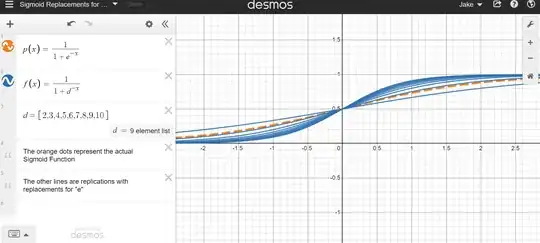Within the Sigmoid Squishification function,
f(x) = 1/(1 + e^(-x))
"e" is unnecessary, as it can be replaced by any other value that is not 0 or 1. Why is "e" used here?
As shown below, the function is working well without that, and in replacement, any other number that's greater than 1. All of them
- Squish the number between 0 and 1
- Reach (0, 0.5)
- Make an "S" curve
- Has a working derivative
- Have similar derivatives, with Maximas varying on the replacement of Euler's number
The function and derivative with "d" as the parameter replacement can be written as:
const sigmoid = (x, d) => 1/(1 + d**(-x));
const sigmoid_derivative = (x, d) => (d**x) * Math.log(d) / ((d**(x)) + 1)**2;
